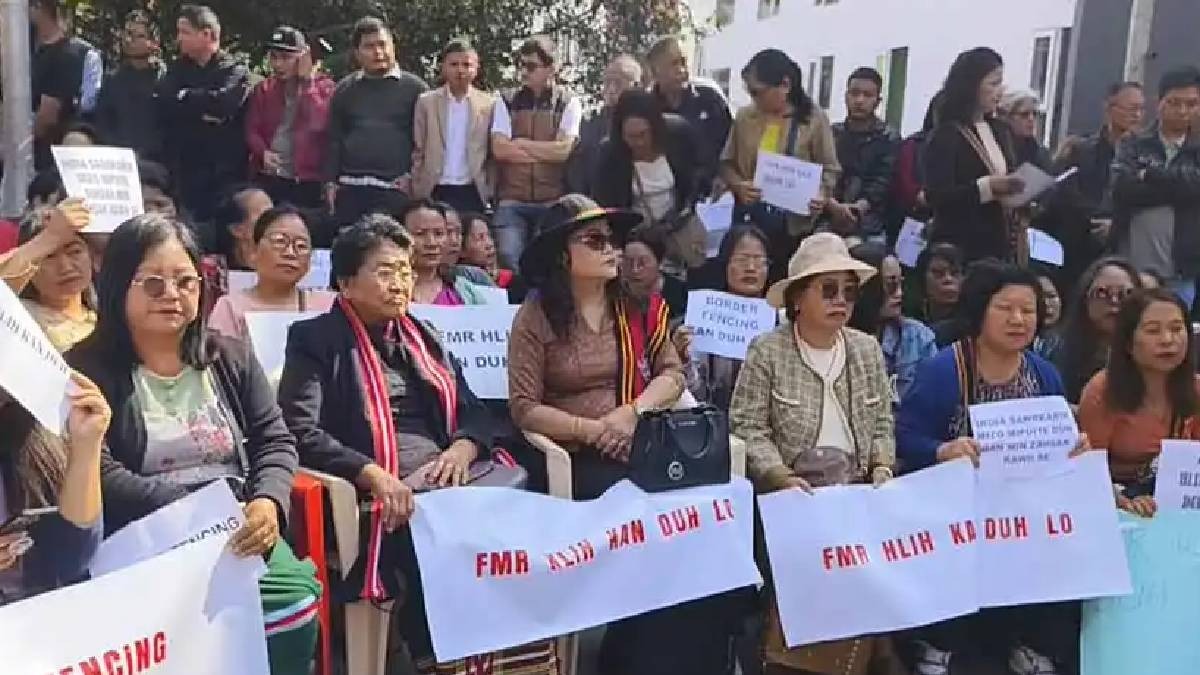Thousands of demonstrators flooded the streets of Mizoram on Thursday, rallying against the Central government’s decision to erect a fence along the India-Myanmar border and revoke the Free Movement Regime (FMR) between the two nations. Organized by the Zo Re-Unification Organization (ZORO), the peaceful protests resonated in Zokhawthar and Vaphai villages of Champhai district, adjacent to Myanmar.
ZORO’s general secretary, L. Ramdinliana Renthlei, reported a massive turnout at the rallies, with both locals and individuals from Myanmar joining in solidarity. The demonstrations aimed to oppose the fencing of the border and advocate for the continuation of FMR, which permits unrestricted movement within a 16-km radius across the international boundary without formal documentation.
The protestors, wielding placards and banners, underscored the shared ethnic and cultural bonds between the Zo or Zomi people inhabiting the border regions of India, Bangladesh, and Myanmar. ZORO, a prominent Mizo organization, has long championed the reunification of Chin-Kuki-Mizo-Zomi tribes under a unified administrative entity, echoing historical grievances stemming from colonial border delineations.
Mizoram Chief Minister Lalduhoma has engaged with ZORO leaders, urging the Central government to preserve the existing arrangement, emphasizing its significance in maintaining social cohesion and cultural exchange. However, the Central government’s decision to fortify the porous India-Myanmar border, citing security concerns, has drawn criticism from various quarters in Mizoram.
The Mizoram Assembly unanimously passed a resolution in February opposing the border fencing and FMR abolition, reflecting widespread discontent. Concerns over the potential disruption of longstanding ties between Mizoram’s indigenous Mizos and their counterparts across the border loom large, prompting vehement opposition from political parties, civil society groups, and student organizations.






















+ There are no comments
Add yours